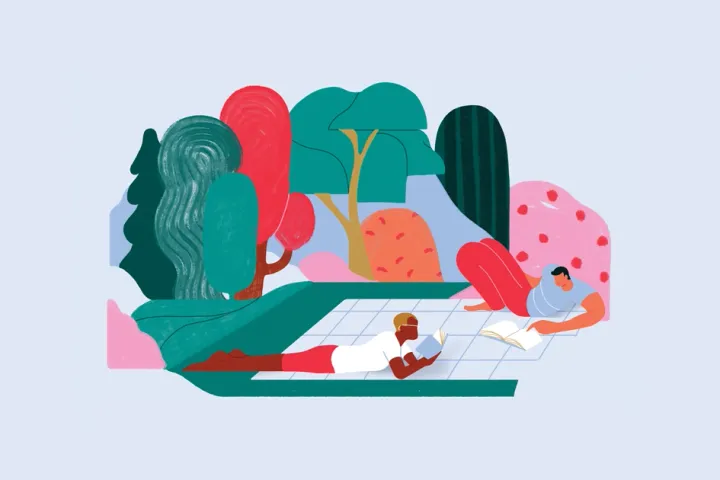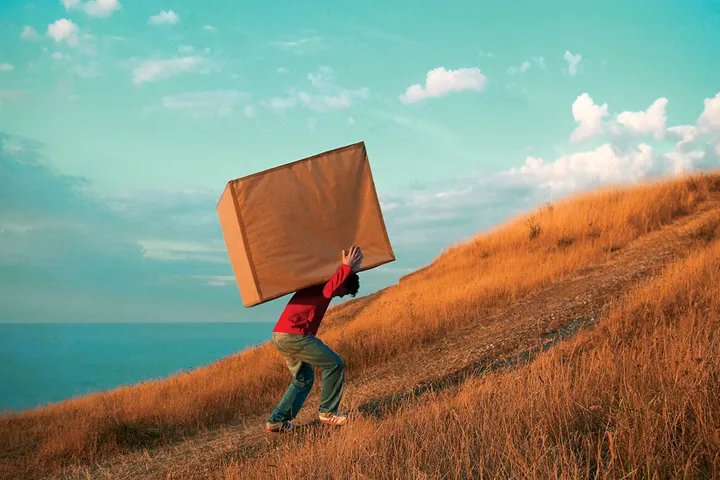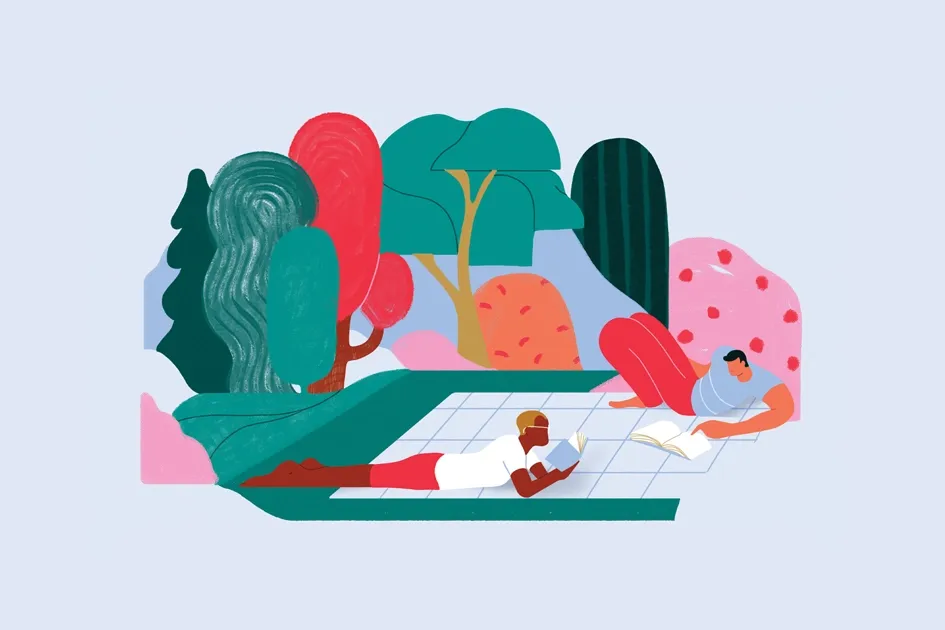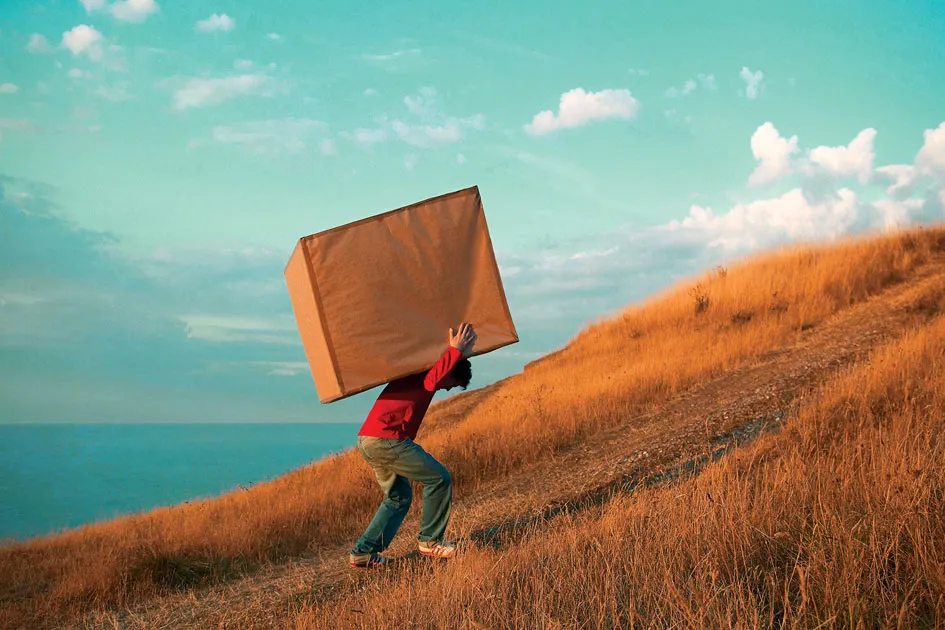Out of the hundreds of pages in The Picture Bible I read as a child, only one features an illustration from the book of Revelation.
“Behold, I stand at the door, and knock,” Jesus says, standing and knocking, and wearing a flowing white robe with a sky-blue sash. “If anyone hears my voice, and opens the door, I will come inside” (Revelation 3:20, The Picture Bible). As in “The Light of the World,” the painting by William Holman Hunt that for many Christians became the visual representation of the verse, the door features no handle on the outside—it can only be opened from within.

The Picture Bible’s creators probably chose to depict this verse because it’s more kid-friendly than, say, Jesus with a sword protruding from His mouth like a metallic tongue (Revelation 1:16). It’s also one of the more intelligible images in the book of Revelation. No seven-headed beasts with 10 horns or whores of Babylon here, folks—just Jesus popping by for a visit, as if for a cup of sugar.
On the other hand, perhaps The Picture Bible didn’t need to feature more illustrations from Revelation, because it’s picturesque as is. I know this is what attracted me to it as a boy. The beast, the dragon, and the seven-eyed, seven-horned Lamb all seemed like sideshow spectacles in some kind of cosmic circus, although I couldn’t make heads or tails of—well, their heads or tails. I had no idea what Revelation was actually about, but I was spellbound.
As an adult, I read Revelation twice in an attempt to understand it. I soon realized that my childhood fascination with the book’s fantastical creatures amounted to a fixation on the supporting characters rather than the protagonist: God.
More than anything, it seems to me that Revelation reveals facets of God’s character, providing believers with images of our Creator that we can carry with us as we live, much like soldiers might carry a picture of a loved one in their pocket.
It seems to me that Revelation provides believers with images of our Creator that we can carry with us as we live, much like soldiers might carry a picture of a loved one in their pocket.
Before the age of camera phones and social media, I’d forget the faces of people I had not seen recently. At the very least, my memories of them became distorted. How much more then, do we need clear pictures of God, whom we cannot see, to remind us of His countenance? I think Revelation’s pictures of God can remind us of who He is, what He’s like, and what He holds in store for us.
The image of Jesus knocking at the door is a favorite of mine. It reminds me that the Omnipotent once gave up power for humanity’s sake, putting on flesh so He might have an intimate audience with us. I’m sometimes tempted to think of my Creator as a killjoy who is more concerned with rules than a relationship with me, but this picture functions as a corrective.
In Revelation 4, the Creator is enthroned and encircled by four living creatures, each with an excess of eyes and wings. These creatures praise God endlessly, reminding me that my Maker is worthy of worship—even by beings that might compel humans to fall prostrate, no less. I meditate on this particular picture when I forget that the One who became a servant for our sake is also the God I am called to serve.
Elsewhere in Revelation, I see a picture of a just Creator judging His unrepentant creation for its wicked ways. This judgment extends to Satan in chapter 20, when God condemns him to an eternity in the lake of fire. Despite an abundance of evil in the world, this portrait of Yahweh gives me hope that God’s goodness will somehow prevail.
I turn to a final picture more often than any other, though: Following the creation of a new heaven and earth, Jesus no longer needs to knock on humanity’s door, because, as Revelation 21:3 says, “the tabernacle of God is among men, and He will dwell among them.” Now the doors, if there are any, have handles on both sides.
Here I see a picture of a family reunion that includes our heavenly Father and His once-estranged children. It’s the sort of photo one keeps in a shirt pocket, close to the heart. When the world feels far too fractured, this image gives me hope that we will one day be whole again—home again.
Illustration by Jeff Gregory
Click to read more articles in the “Wholly Scripture” series.





